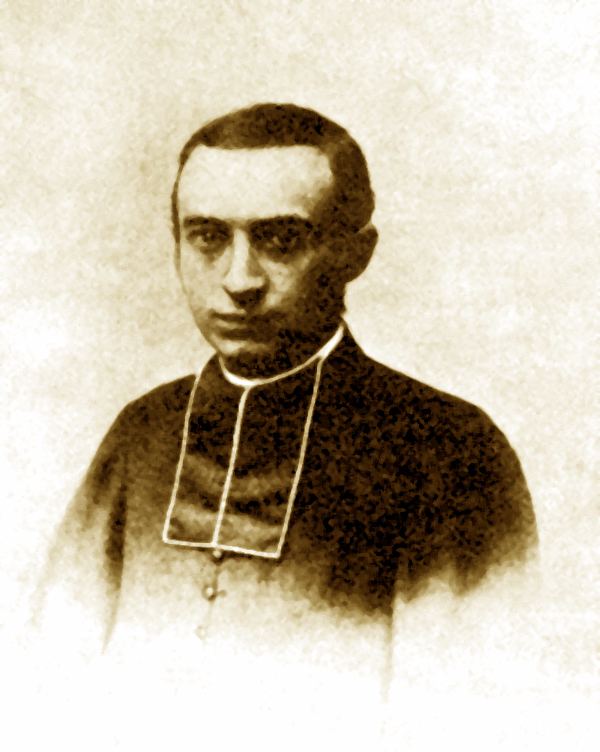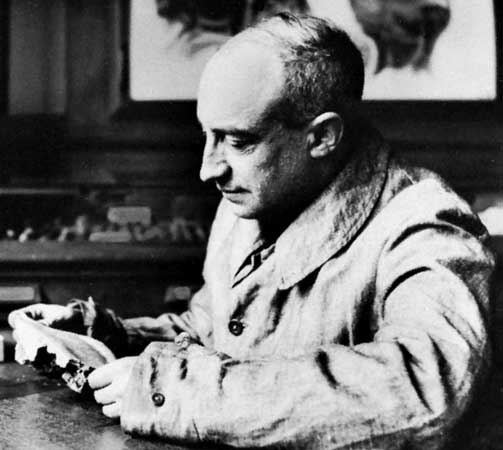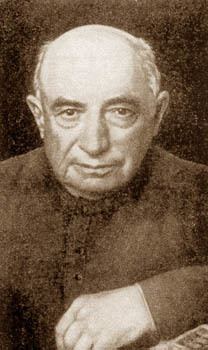Native name Abbe Breuil Alma mater Sorbonne Role Archaeologist | Name Henri Breuil Awards Prestwich Medal | |
 | ||
Died August 14, 1961, L'Isle-Adam, France Books Rock Paintings of Southern Andalusia: A Description of a Neolithic and Copper Age Art Group Fields Archaeology, Anthropologist, Ethnology Similar People Hugo Obermaier, Pei Wenzhong, Davidson Black, Franz Weidenreich, Jia Lanpo | ||
Henri Édouard Prosper Breuil (28 February 1877 – 14 August 1961), often referred to as Abbé Breuil, was a French Catholic priest and member of the Society of Jesus, archaeologist, anthropologist, ethnologist and geologist. He is noted for his studies of cave art in the Somme and Dordogne valleys as well as in Spain, Portugal, Italy, Ireland, China with Teilhard de Chardin, Ethiopia, British Somaliland, and especially Southern Africa.
Contents

Life

Breuil was born at Mortain, Manche, France, and was the son of Albert Breuil, magistrate, and Lucie Morio De L'Isle.
He received his education at the Seminary of St. Sulpice and the Sorbonne and was ordained in 1900 but was given permission to pursue his research interests. He was a man of deep religious faith and learning. In 1904 Breuil had recognised that a pair of 13,000-year-old carvings of reindeer at the British Museum were in fact one composition. He assumed a post as lecturer at the University of Fribourg in 1905, and in 1910 became professor of prehistoric ethnology in Paris and at the Collège de France from 1925.
Cave paintings

Breuil was a competent draughtsman, faithfully reproducing the cave paintings he encountered. In 1924 he was awarded the Daniel Giraud Elliot Medal from the National Academy of Sciences. He published many books and monographs, introducing the caves of Lascaux and Altamira to the general public and becoming a member of the Institut de France in 1938.
Breuil visited the Peking Man excavations at Zhoukoudian, China in 1931 and confirmed the presence of stone tools at the site.
In 1929, when already a recognised authority on North African and European Stone Age art, he attended a congress on prehistory in South Africa. At the invitation of prime minister Jan Smuts he returned there in 1942 and took up a chair at Witwatersrand University from 1944 to 1951. During his South African stay he studied rock art in Lesotho, the eastern Free State and in the Natal Drakensberg. He undertook three expeditions to South West Africa and Rhodesia between 1947 and 1950. He described this period as "the most thrilling years of my research life". In 1953 he announced his discovery of a painting about 6 000 years old, subsequently dubbed The White Lady, under a rock overhang in the Brandberg Mountain.
Breuil returned to France in 1952 and produced a series of publications sponsored by the South African Government. Breuil's books contain valuable photographs and sketches of the art works at the sites he visited but are marred by official South African racism. Breuil developed elaborate scenarios to attribute "white" authorship to the paintings he studied. For example, he had a theory that the beautiful painting known as "The White Lady of the Brandberg" had been painted by Egyptians (or some other Mediterranean people), who had improbably made their way thousands of miles southwest into the wilds of Namibia, rather than accepting the logical and fairly obvious fact that the paintings were the product of (and clearly represent the lifestyle of) the Bushmen and other native peoples of Namibia and South Africa.
His contributions to European and African archaeology were considerable and recognised by the award of honorary doctorates from no fewer than six universities.
He died at L'Isle-Adam, Val-d'Oise, France.
